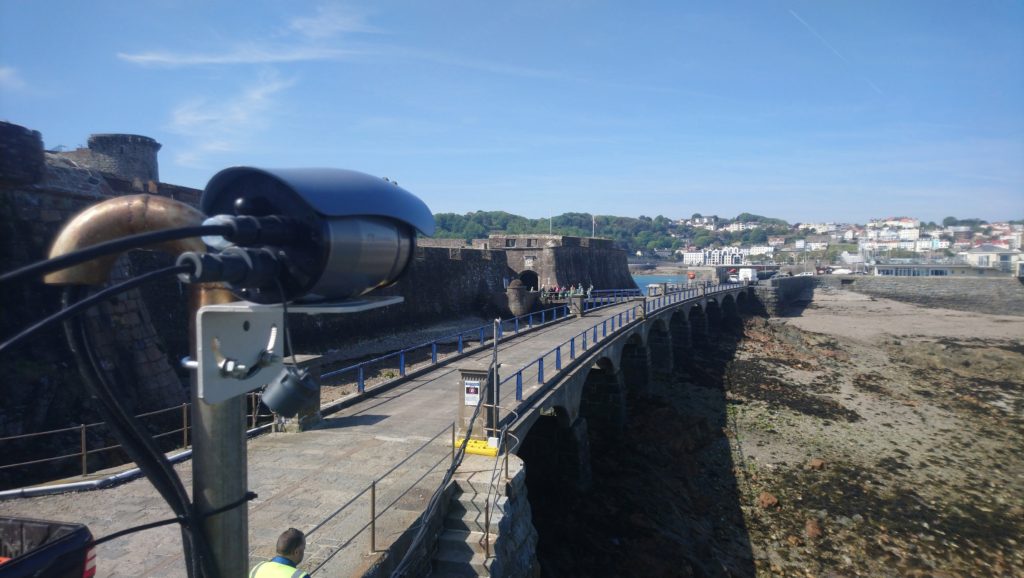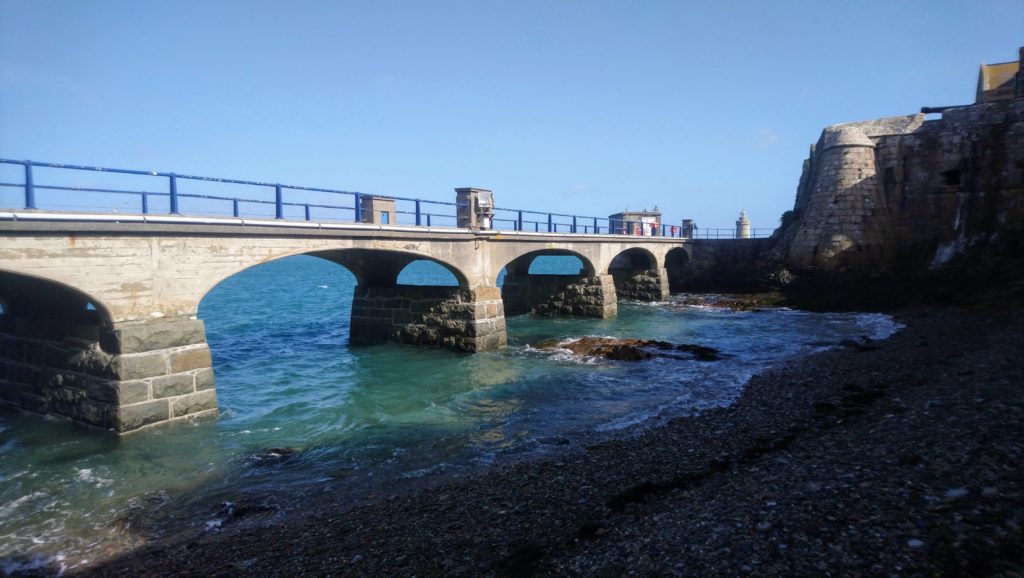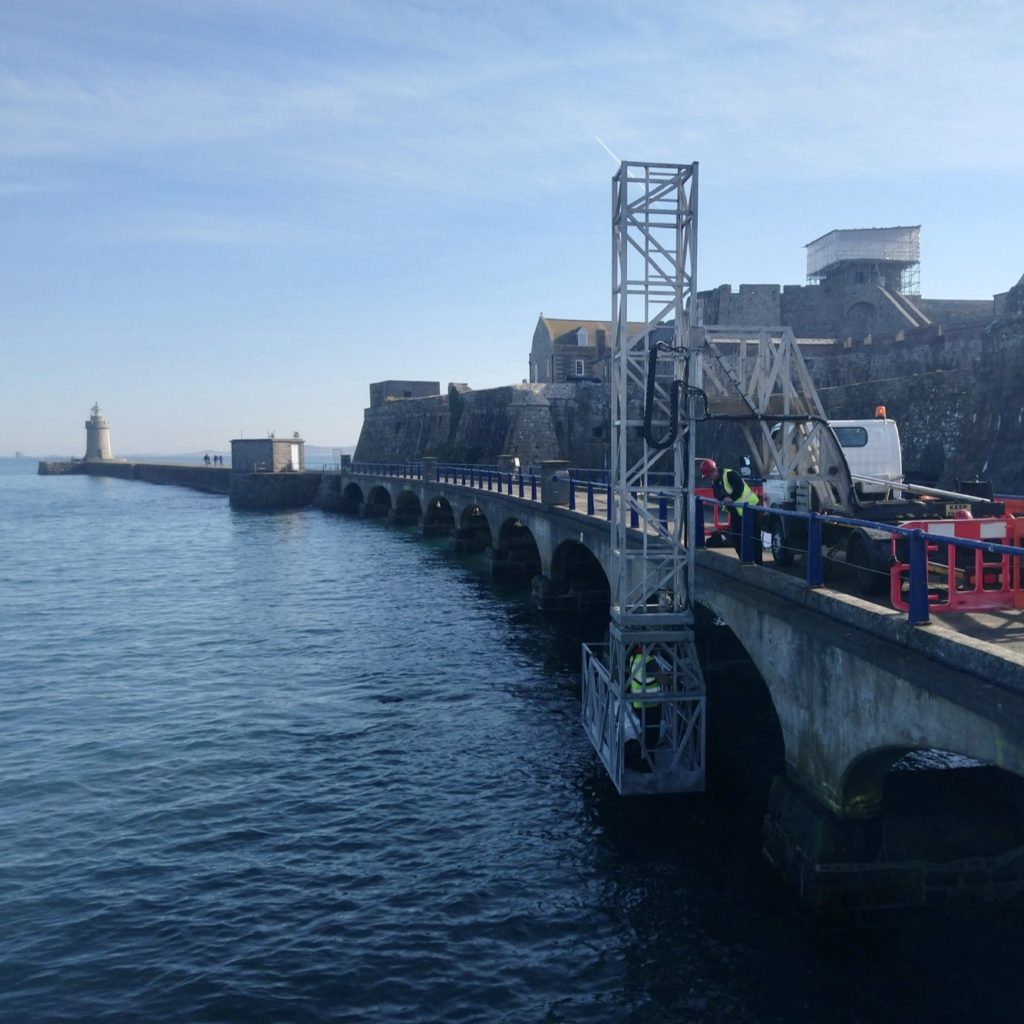
Following a successful alternative tender, we assessed the condition of the structure by undertaking a range of concrete tests. We then built a deteriorated state Finite Element Analysis (FEA) model of the bridge and confirmed the model’s accuracy by installing a series of fibre optic strain sensors and performing a number of dynamic load tests. We are providing ongoing structural health monitoring which is maintaining access to the historically and culturally significant castle and breakwater.

McFarland Consulting Engineers initially undertook a visual, geometric and delamination survey of the bridge and performed a series of Non-Destructive Tests (NDT) which included:
- Concrete cover to reinforcement measurements using a Ferroscan
- Concrete carbonation depth measurements
- Extraction of concrete samples for subsequent chloride, cement, sulphate and High Alumina Cement (HAC) analysis
- Extraction of concrete cores for subsequent compressive strength and petrographic analysis
- Half-cell potential surveys across all concrete elements to determine locations of active reinforcement corrosion
- Concrete resistivity measurements
- Linear Polarisation Resistance (LPR) corrosion rate measurements
After we determined the condition of the structure, we built a Finite Element Analysis (FEA) model of the bridge to locate areas exhibiting the greatest stresses. We then installed a number of fibre optic sensors at these locations and undertook load testing which helped calibrate our FEA model. These sensors have remained in place which are used to determine the ongoing performance of the structure.
